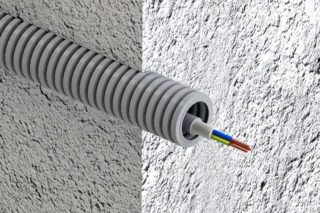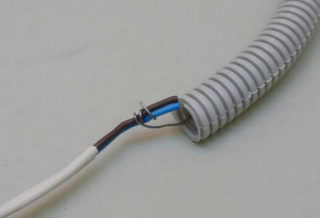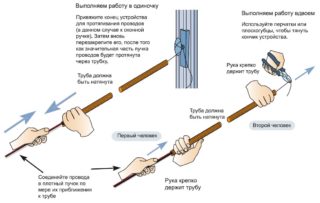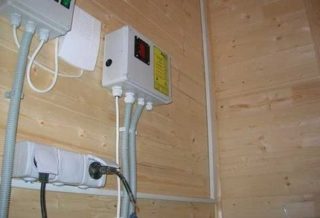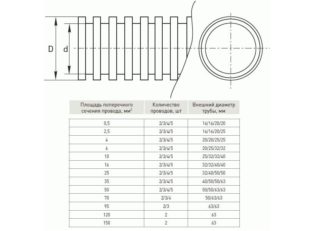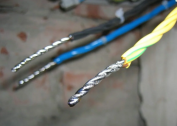In accordance with the rules for installing electrical equipment, corrugated pipes are used when laying low-current networks or electrical wiring. This is due to the fact that the corrugation is a pronounced dielectric that protects the wiring from mechanical and thermal effects.
What is corrugation
Corrugation, despite its simple design, is considered one of the most useful and sought-after inventions of mankind. Visually, it is a pipe with a ribbed surface, which at the same time gives it rigidity and flexibility. Corrugation is made of various materials, the most popular are metal, aluminum, as well as plastic pipes.
Corrugation can be of different diameters, indicators range from 10 mm to 2 m. This product has a wide range of applications.
Scope of corrugated pipes
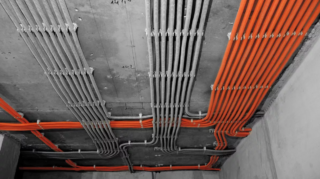
Corrugated pipes are widely used in various industries, as well as for domestic purposes.
- computer networks (white color);
- general wiring (gray);
- connection of electrical appliances, household appliances (brown);
- laying of telephone lines (green);
- external wiring (red);
- for connecting heating systems, underfloor heating (blue);
- gas supply systems (yellow).
For electrical cables, special electrotechnical corrugations made of polyvinyl chloride are most often used.
How to get a wire into a hose
Work is recommended to be performed together. This is due to the algorithm of actions.
- Remove the end of the wire (a kind of cable or string) from the hose and connect it to the installed cable. A hole is made in the winding of the wire, a thin wire penetrates through it and is securely fixed by twisting.
- The hose is leveled along the entire length, only after that you can proceed to the cable plant in the corrugation.
- One worker holds the end of the pipe from which the cable plant is firmly held, and the second pulls the wire from the back. This approach allows you to effectively push the wire.
- The fully stretched wire must be wound to the pipe to prevent the structures from shifting relative to each other.
Cases are common when the wire gets stuck inside the corrugation. This is due to the weakening of its tension or the formation of bends. It is important to monitor the condition of the hose until the drawing process is completed.
How to stretch a wire
You can route electrical cables through walls or ceilings using special clips. Their diameter is selected in accordance with the cross section of the corrugation. This method is more common, since it fixes pipes securely and has an attractive appearance. In hidden places, it is preferable to use wall plugs or metal staples.
When laying pipes, the joints are connected using a budgetary connecting element - couplings. If the wires are not insulated in this section, the place of attachment to the pipe coupling can be sealed with sealant. To pass through the walls, special perforated sleeves are used, which, if necessary, are also treated with sealant.
When stretching the cable in the corrugation, it is important to avoid bends that exceed the allowable radius.
Installation of electrical wiring in the corrugation in an open way
The installation of corrugated pipes involves several stages. The algorithm for installing electrical wiring in the corrugation in an open way:
- To fix the hose, special clips made of high-quality plastic are used. They are characterized by different sizes, the choice will depend on the diameter of the pipes used.
- Clips are attached to surfaces with an interval of 30-40 cm. Do this with dowels or screws. The choice of parts depends on the material from which the surface is made, for example, wood, concrete, brick, etc.
- For reliable fixation, the corrugation is pressed into the clip until a characteristic click appears. If the clips were selected correctly, the probability of spontaneous loss is excluded.
At the design stage, laying out the wiring diagram schematically, the following important points must be taken into account:
- The maximum and allowable turning radius of the corrugation is 90 degrees. The smoother the angle, the better.
- Turns should not be close to each other, the optimal distance between them is 4-5 meters. If this is not possible, for safety reasons, the wiring is additionally equipped with a junction box.
- The maximum length of an individual section is 25 meters, the permissible number of turns is 4.
How many wires can be laid in one corrugation
According to the rules for installing electrical installations, it is required to lay the main and backup cables, as well as emergency and working lights, through different channels.
An approximate calculation of how many cables can be laid in one corrugation:
- With a diameter of 16, 3 cables are placed.
- If it is 20, it will fit 4-5.
- Diameter over 25 accommodates 5-6 cables.
The exact quantity is calculated provided that the pipe is at least 35 meters long.
If integrity is damaged, metal structures are soldered using a special acid. If the integrity of the plastic corrugation is violated, the holes are welded with polyethylene.
The advantages of the corrugation are in affordable cost, light weight, which greatly simplifies the process of transportation and installation, high resistance to thermal and mechanical influences, long service life.
As a rule, there are no difficulties in choosing and installing corrugated pipes. During work, personal safety precautions must be observed; when working with electric cables, it is important to de-energize the room and check the voltage in the conductors.
